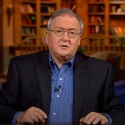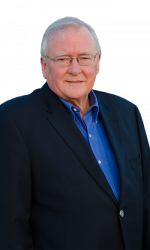Last week, I accompanied my good friend Orville to a Remembrance day ceremony at a local school. he spoke eloquently at an assembly and later sat down with a class of 9 year old children who were enthralled with his stories and asked him lots of questions. This 95 year old gentleman had these young kids in the palm of his hand. When I commented that I was doing this last Friday, so many of you expressed interest in him, so I thought you might like to hear Orville’s story. Here are his words:
During World War 2, the electronics marvel, now known as radar, evolved rapidly and is widely credited with being a significant factor in winning the Battle of Britain and the Battle of the Atlantic. British scientists and engineers developed a workable ground radar system shortly before the beginning of the war in 1939. Smaller equipment for installation in aircraft soon followed and many variations evolved at a furious pace.
The urgent need for technical personnel soon exhausted the supply of people available in Britain suitable for radar training by the Royal Air Force (RAF). The British and Canadian governments arranged for the Royal Canadian Air Force to recruit personnel with suitable background to be trained by the RAF in Canada. A secret radar school was established near Clinton, Ontario with extensive security precautions. Radar can locate unseen objects at a considerable distance by sending short pulses of radio energy and analyzing the weak signal reflected back.
I developed a strong interest in radio early and while in high school was able to meet the requirements to obtain a government amateur radio licence. I built a small radio station and was soon communicating with other radio amateurs using the Morse code.
I went to the Royal Canadian Air Force (RCAF) recruiting office in London, Ontario in early 1942 expecting to enlist for some form of communications. Instead, I was invited to join an unidentified secret electronics program because of my amateur radio experience. After about a year of pre-radar training and taking a special oath of secrecy, I learned that I was involved in a program with the misleading name Radio Direction Finding (RDF), later renamed radar.
During radar training at the British Royal Air Force (RAF) School at Clinton, Ontario, I was promoted and became a commissioned officer. After training on new types of radar at Clinton and in the United States, I was posted to Mediterranean Theater of War. Soon, I found myself on a cargo airplane at Dorval Airport in Montreal headed for Rabat in North Africa. Several flights later, I arrived at the RAF Pathfinder bomber squadron in southern Italy as the replacement Radar Officer.
This elite squadron was scheduled to replace its British-built Halifax aircraft with newer American-built B-24 Liberator aircraft equipped with the latest electronics including an advanced radar. It was a hectic period as operations against the enemy continued despite the intensive activity to convert to a new type of bomber aircraft. As the squadron Radar Officer, I was involved in the training of technicians for the maintenance of the electronics in the new type of aircraft and also the aircrew radar operators. These activities involved a lot of flying which I enjoyed.
After the war in Europe ended, I travelled from Naples in Italy to England by ship. A few months later, another ship brought me back to Canada, landing at Halifax. A month later, I married my fiancée, Bette, and then started my university training in Radio Physics. My career as an engineer and manager was in the field of Aerospace in Canada and then later in the U.S. My career benefitted significantly from my wartime training and experience. After a transfer back to Toronto, we settled in Brampton in 1980 and I retired from General Electric in 1987.








